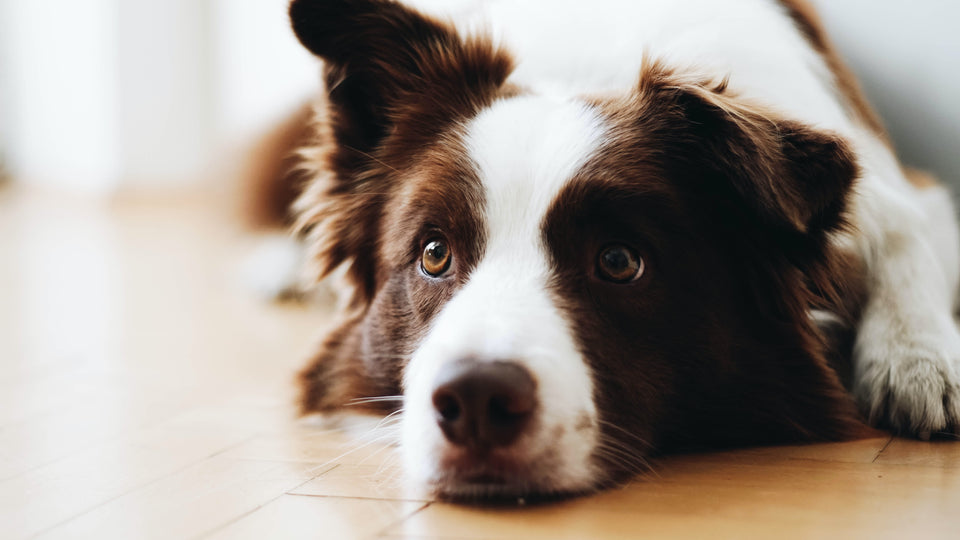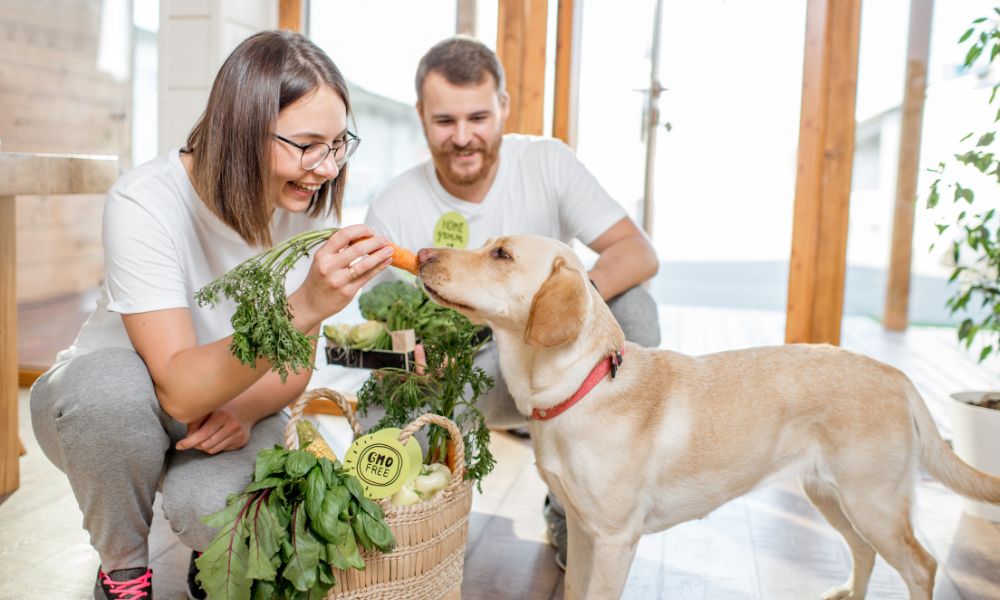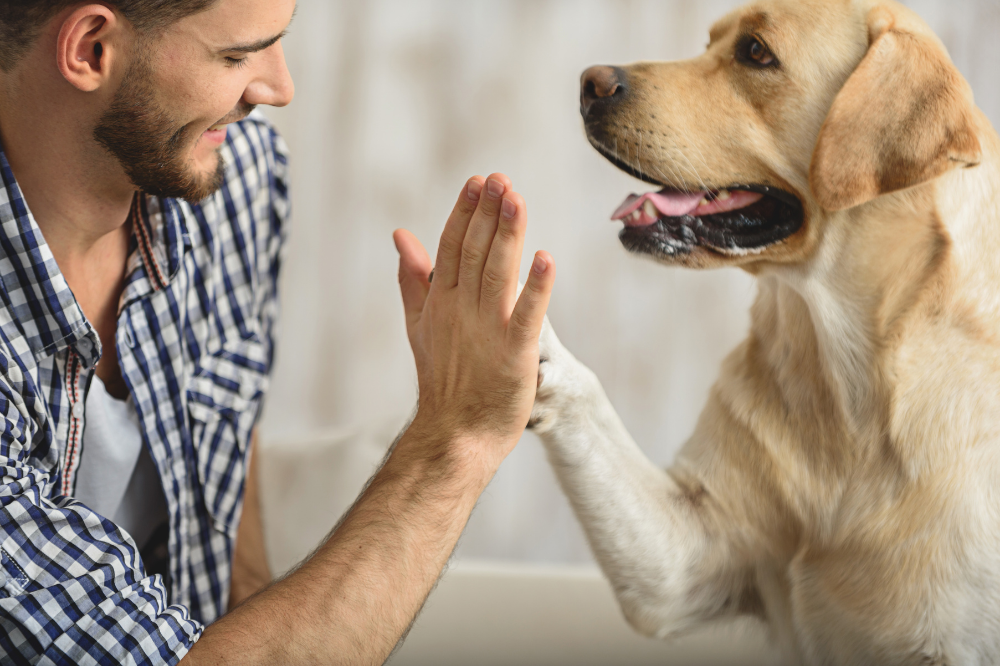
How to Crate Train Your Dog

Crate training is a hassle. While some dogs take to it like a fish to water, some have a harder time. Like oil and water, or, I don't know, spaghetti and peanut butter.
Anyway, the point is that some dogs and puppies are harder to crate train than others. Your fur baby might have separation anxiety that causes them to bark and whine when left alone, or even pee on the floor.
For these situations, we’ve listed the steps you need to take to crate train your dog.
On the other hand, some pet parents have a hard time reconciling with leaving a family member in a jail cell while they go to work. For pawrents like these, a shift in mindset must come way before the training begins.
In short, if you're not invested in crate training, how can you expect your dog to be?
Crate Training: A Mindset
The best dog parents can put themselves into the mind of their pets. Empathy is what separates a good dog owner from a great one. But, in some circumstances, we just can't fathom how our pets are feeling. This is especially true when it comes to crates and crate training.
For many pet parents, it can be jarring to put their baby into what they consider to be a cage. That logical leap isn’t hard to make, either. If you’ve rescued your dog, worrying that they might go back to that place mentally or emotionally is an understandable fear. But, in reality, a crate can be a comforting, personal space for a dog to escape the stresses of a new household, or help them understand the outside world.
“When used properly, crates create a den-like environment for a dog,” as an article in Wag! points out. The article goes on to note that when used improperly, crates can be abusive and create a feeling of anxiety and fear of the outside world in your dog. However, when used with love and in a fear free manner, not as a punishment, crates create a welcoming, safe environment where dogs love to be.
Many organizations, PETA being the most outspoken on this topic, have argued that crate training a dog is akin to imprisoning them. However, this is not always the case.
Sure, some dogs don’t take well to crate training and that’s fine. But, trying it out definitely doesn’t hurt and, if it works, you’ll create a safe and comfortable place for your dog to rest at night, while you’re at work, or when they’ve had enough of your face kisses.
How to Start Crate Training Your Dog
Before we get into the steps, make sure that the crate is big enough for your dog to comfortably move around in. Dogs, like people, like to move out of uncomfortable positions, or after lying down in the same place for too long. Your dog should have enough room in their crate to do that.
There are many different types and styles to choose from, to pick one that you think will fit best with your home and your dog. A few more things from the American Humane Society, though:
- Never use the crate as a punishment.
- Don’t leave your dog in a crate for too long.
- Don’t crate puppies for more than three or four hours at a time.
- Crate your dog until you can trust them, then let them use it voluntarily.
Now, onto the steps.
Step 1: Introductions
Whether your dog is a puppy, a senior, or anything in between, they won’t know what to do if they’ve never encountered a crate before. Instead of placing them in a metal box hoping that they come to love it, slowly introduce them to the idea first.

Place the crate in an area of your home that you and your family frequent. Make the crate as inviting as possible by placing your dog’s favorite blanket or toys in it. Let your dog explore the crate voluntarily. Forcing them in will only cause anxiety. You can even take the door off if you’d like.
If your dog doesn’t naturally begin to lay in the crate, that’s perfectly normal. Though, it is going to take some extra work on your part. Coax your dog over and into the crate using a soothing, calm voice. Treats and food inside the crate are a great way to make the space inviting and create positive connotations as well.
Doing these few things should make your dog feel comfortable exploring and being inside of the crate. However, this could take a minute, or weeks. Be patient.
Step 2: Feed Your Dog in the Crate
Treats are all fine and good, but having your pup take their meals in their crate is a whole new ballgame. For anxious dogs, eating entire meals in the crate creates even more positive connections with the space, and is a comforting, natural action for them to take.
If your dog is looking especially comfortable with the crate, place the food dish at the far back of it. If not, place the dish as far as they’re willing to go, and no further. Each time you feed your dog in the crate, move the dish further and further into the crate until you’ve placed the food at the back wall.
Try to close the door while they’re eating. For the first few times, open the door once they’ve finished their meal. As you go, leave the door closed for longer periods of time. Once they’ve stayed in their crate for about 10 minutes after eating, you’ve successfully completed this step.
However, if they begin to whine, reduce the time the door is closed. You may have moved too quickly. But, do not let your dog out of the crate if they whine or cry. This creates an association with crying and being let out, and they won’t stop doing it.
Step 3: Crate Your Dog for Longer Periods
Once your dog seems comfortable eating and being in the crate for shorter periods, it’s time to lengthen them out. Coax them over with a treat, and give your specified command to enter. This can be anything from “kennel,” to “in,” and combining this with a physical motion of your hand pointing into the crate will help communicate what you’re asking them to do.
Once they’ve entered, praise your dog, give them the treat, and close the door. Don’t leave them alone, though. Sit near the crate for five to ten minutes, and then leave the room for a few. Come back, and let them out of the crate. Remember not to respond to whining or crying.
Keep doing this, and gradually increase the time between letting your dog into the crate and taking them out of it. Make sure you’re out of sight for this time as well. Once you’ve hit about 30 minutes, you can begin to leave them crated for short periods, or let them sleep in the crate at night.
Step 4: Crating Your Dog When You Leave
These steps are going to be a tad repetitive, but bear with us.

Perform the same coaxing technique you used when first introducing your dog to the crate, commanding them to enter. Once they have, give them the treat, and close the door.
Do not make a big thing out of leaving. Prolonged and emotional goodbyes only make it harder on the dog, and harder on you. Plus, this kind of gesture can make your dog think that your departure is more dire than it is, and that you may never come back. Leave quietly.
Keep your arrival back home as relaxed as you were when you left. Don’t play into excited behavior. Important note: don’t stop crating your dog when you’re home. If you do, your dog may begin to associate being in the crate with you being gone, which can cause increased anxiety and an unwillingness to enter the crate.
Step 5: Sleeping in the Crate
Same thing as the last two steps, but moving the crate to a place near your bedroom might be a good idea. Especially for puppies, nighttime messes are common, and you want to be able to hear whining or crying regardless of whether or not you’re going to react to it or let your dog out of the crate.
Note: placing a blanket on top of the bed will create a darker, cozier space, and block your dog from the ambient lighting of electronics, night lights, or the bathroom door.
As your dog gets more comfortable sleeping in the crate, you can gradually move them away from your bedroom. However, if you feel more comfortable keeping them close, by all means.
That’s it! Barring any other issues, your dog should be crate trained! But, there are some things to consider. Some dogs experience fairly extreme separation anxiety, and crate training won’t solve that problem. Contact your veterinarian to discuss ways to help your dog moving forward. Solutions may include soothing mists, medications, or other environmental changes.
Share this article
written by


